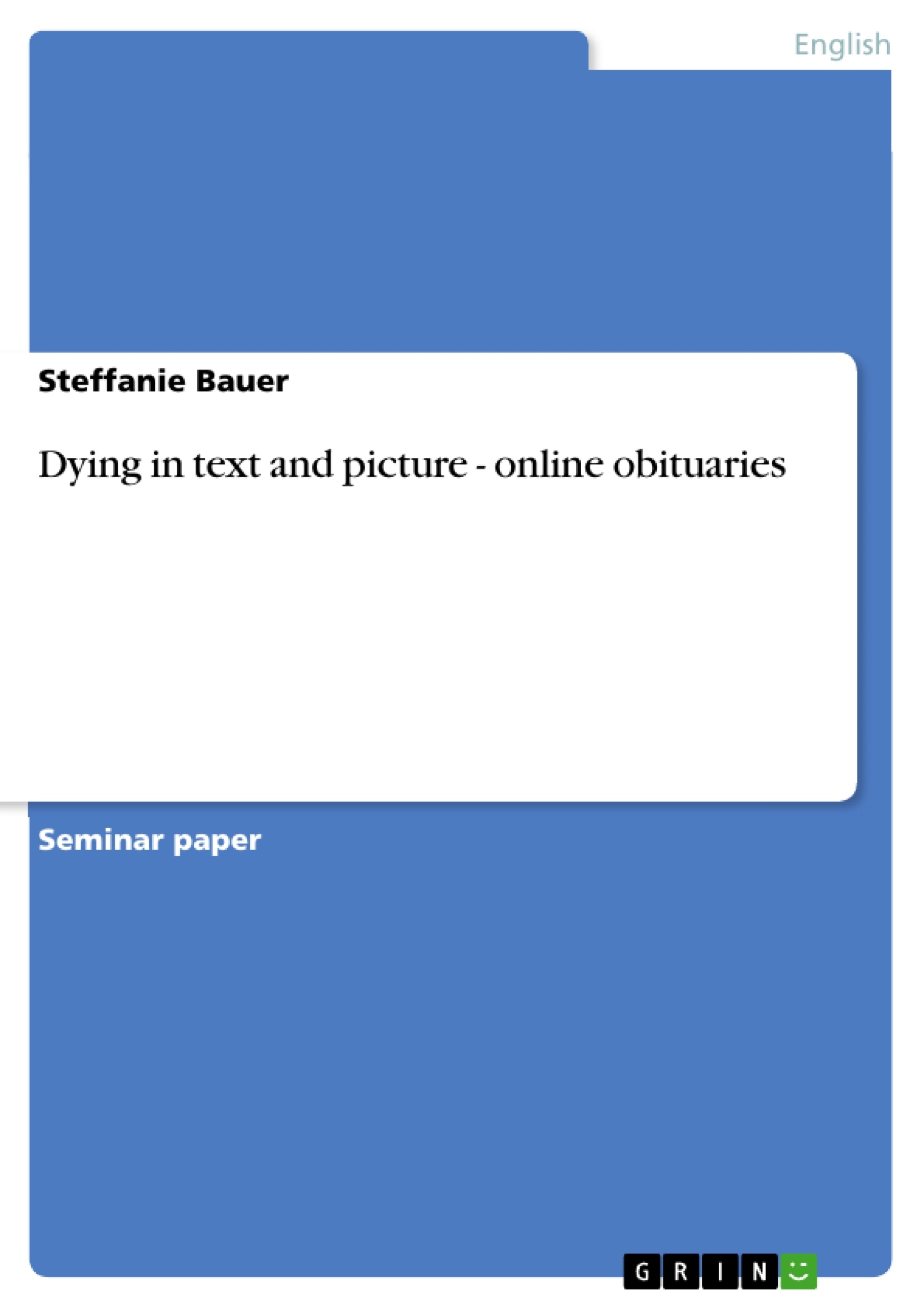Obituaries in newspapers and magazines are solemn, quiet affairs. But the new media offer a different kind of way of honoring a deceased loved one. You can publish articles, countless picture, interactive guest-books and other gimmicks. But a very popular means of mourning are slideshow obituaries.
A few notes concerning terminology are necessary at this point. The term obituary is traditionally used for text-only formats (sometimes including a single picture) that appear in newspapers. The slideshow obituaries of our corpus are structurally as well as content-wise very different from these. Nonetheless, we use have the term as a starting point for our paper and will use it throughout our text.
One can argue that a comparison between slideshow obituaries and traditional ones is impossible because of the high discrepancies in structure and content. But our reason for omitting such a comparison is based on the fact that an analysis of this kind would have to rely primarily on linguistic aspects. The numerous pictures in slideshow obituaries would be dealt with very briefly and which does not do justice to the prominent role they play in this particular kind of text.
But the “more” of a slideshow obituary is not only the pictures. Other visuals play an important role, the layout, the hosting website. You have the freedom to use different fonts and font sizes. You can create everything from scratch or fall back on websites that provide design templates. You can add music or a voice message. The content is usually much less limited than that of a traditional obituary. This myriad of design possibilities leads to our hypothesis: we propose that, in slideshow obituaries, the different modalities – especially word and image – cannot be separated from one another. They fulfill inherently different functions and each contributes vital information to the overall product.
Following this introduction, there will be a section on online obituaries. It will introduce the concept and give examples of different website providing such a service. Chapter three contains the main part of this paper; the analysis of our small corpus of slideshow obituaries. We will determine the functions of the word and the functions of the image. A comparison of these analyses will support our hypothesis. A conclusion will round off the paper and give an outlook on possible further research.
Inhaltsverzeichnis (Table of Contents)
- Introduction.
- Online Obituaries
- General Background Information
- Advantages and Disadvantages
- Some Exemplary Websites
- A critical view on Legacy.com
- How to Create a Moving Tribute
- Our Corpus
- Analysis
- Functions of the Word
- Introduction
- Analysis of the Functions of the Word
- Functions of the Image
- Introduction
- Analysis of the Functions of the Image
- Analysis of Text-Image-Relation.
- Functions of the Word
- Conclusion.......
Zielsetzung und Themenschwerpunkte (Objectives and Key Themes)
This paper examines the function of slideshow obituaries as a new media format for mourning deceased loved ones. It focuses on the interplay between text and image in these digital memorials and explores how they differ from traditional, print-based obituaries.
- The development of online obituaries as a medium for mourning.
- The advantages and disadvantages of online obituaries compared to traditional ones.
- The role of text and image in slideshow obituaries.
- The relationship between text and image in creating a comprehensive memorial experience.
- The potential for further research in this emerging field.
Zusammenfassung der Kapitel (Chapter Summaries)
The introduction sets the scene by contrasting traditional print obituaries with the evolving medium of slideshow obituaries. It highlights the need for a nuanced analysis of the interplay between text and image in these digital memorials.
Chapter 2 provides a detailed overview of online obituaries, exploring their emergence within the broader context of digital life. It discusses the advantages and disadvantages of this format, highlighting its accessibility, flexibility, and potential for global reach. The chapter also presents examples of different websites offering online obituary services, including Legacy.com, which is examined in greater depth.
Chapter 3, the core of the paper, delves into the analysis of a corpus of slideshow obituaries. It explores the functions of both the written text and the visual images within these memorials. By analyzing these functions, the authors seek to support their hypothesis that text and image are inseparable elements in slideshow obituaries, each contributing vital information to the overall message.
Schlüsselwörter (Keywords)
This paper focuses on online obituaries, slideshow obituaries, text-image relation, digital mourning, new media, memorialization, visual communication, and the intersection of language and visual elements in digital memorials.
- Quote paper
- Steffanie Bauer (Author), 2006, Dying in text and picture - online obituaries, Munich, GRIN Verlag, https://www.grin.com/document/154402



